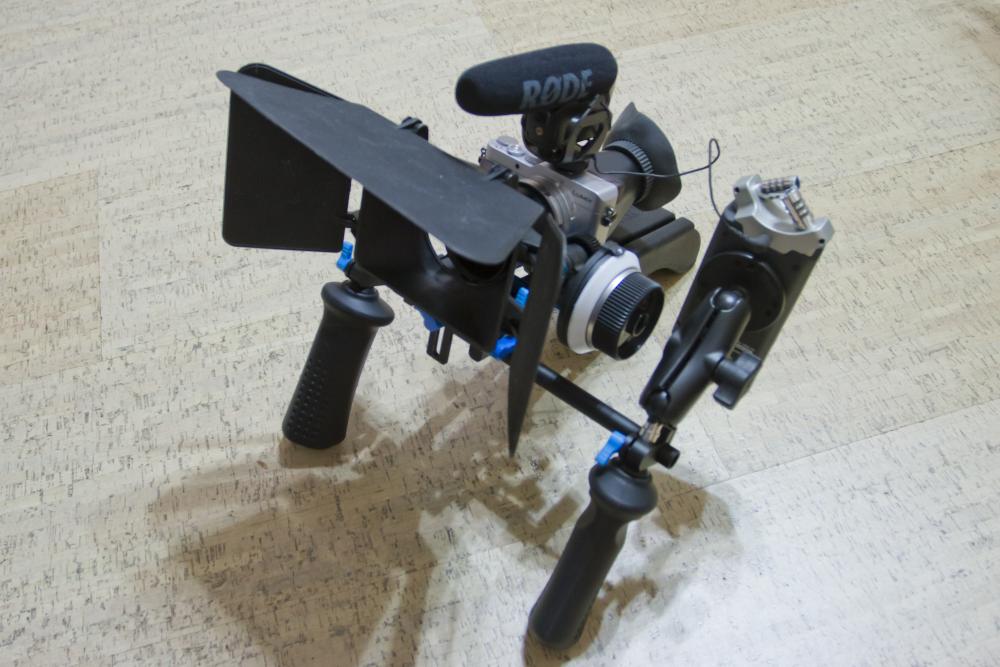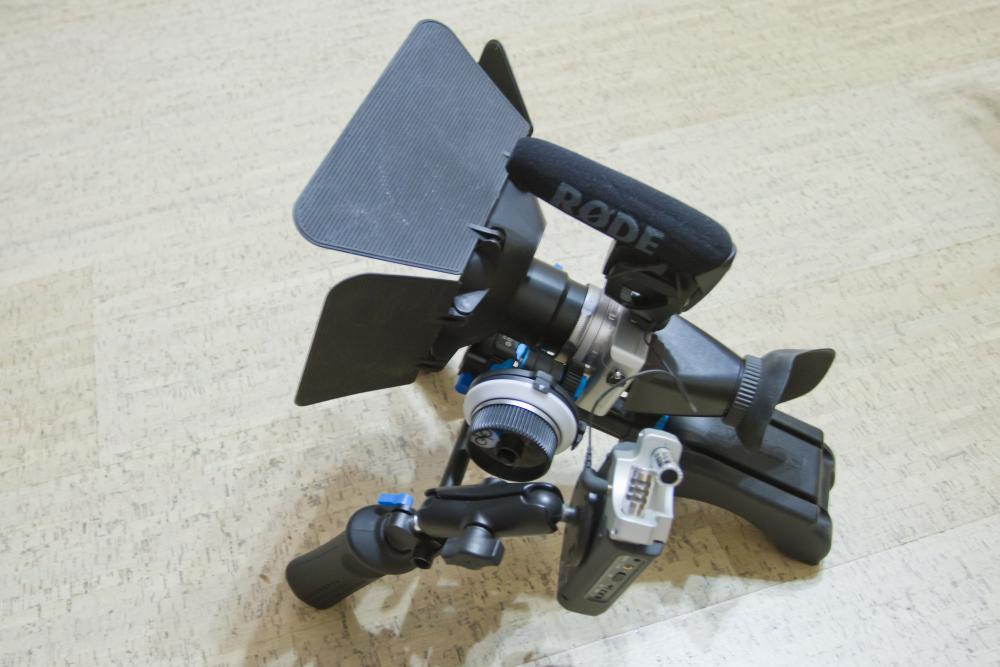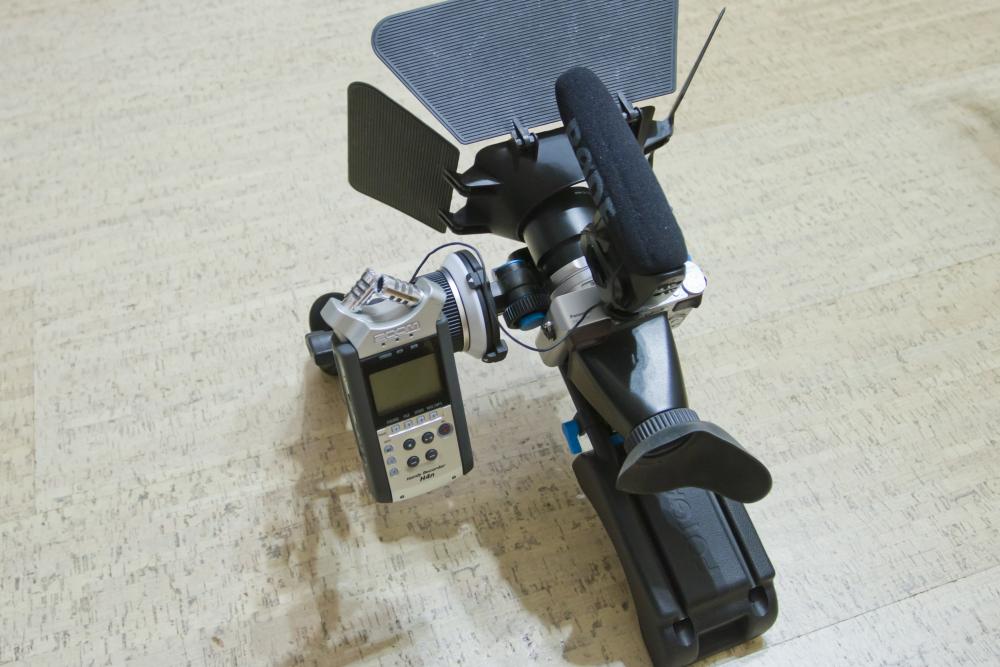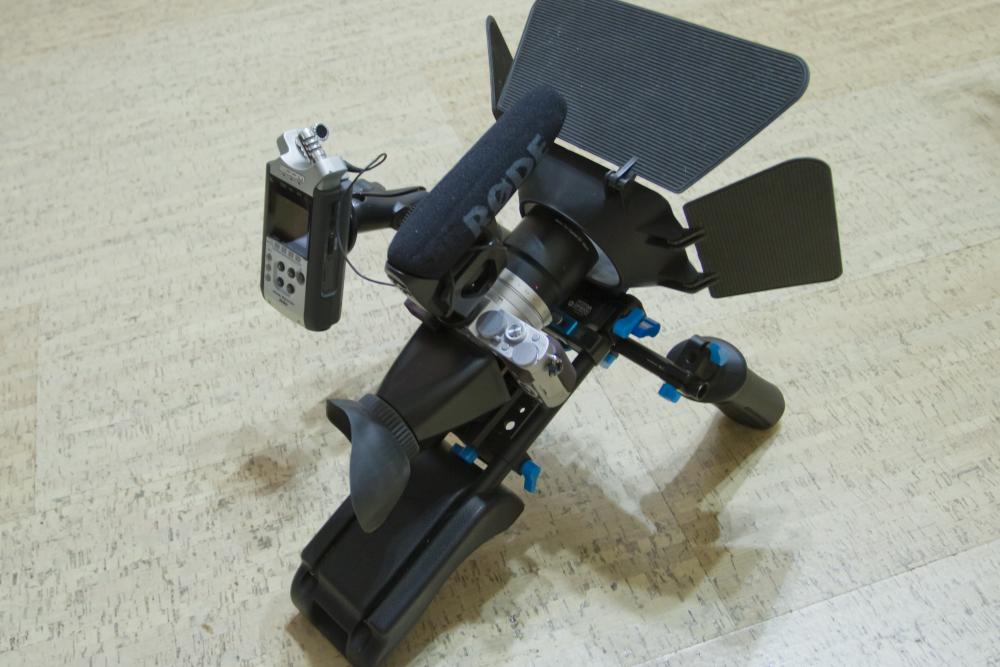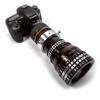Leaderboard
Popular Content
Showing content with the highest reputation on 08/01/2015 in all areas
-
I'd love to see the RX10 mk2 review completed. Thanks!3 points
-
Hi Bootsie... Thanks! Here are some quick photos of two of my shooting rigs, with an explanation for each pic. The image above shows my set-up for shooting with a high magnification supplemental lens reverse mounted on the iscorama, using the Isco on my Nikkor-H 85mm f/1.8. The bracket is made from two strips of hardware store aluminum, drilled to allow mounting with a knob onto the tripod mount of the camera. The angle of the arms is adjustable to allow for different sized foil reflectors to be used at various close working distances. This is a special short-arm bracket for working very close to a subject when there's not much room to move around. The Iscorama has the back end (50mm Nikon mount section removed. Attached at that point is a 52mm to 49mm step-down ring. Onto that are mounted three empty 52mm filter rings to allow the Isco to be mounted on any of my primary lenses having a 52mm filter thread. This ensures that the protruding back element of the Isco compression module doesn't come into contact with the primary lens glass. This three ring "spacer" then serves as a convenient place to attacht an old tripod mount (upside-down) from a junk telephoto lens, which is used as an anchor point for a bowl flash diffuser made from the dish found in a particular brand of frozen dinner. The plastic diffuser has a moveable black piece that allows for soft directional lighting. This diffuser mounts atop the lens using the silver knob on the repurposed tripod mount. The ring resting between the two lenses is a 72 to 52mm step-down ring. All my supplemental lenses have been set up with 52mm rings to mount on the Isco, which is fitted with the 72-52mm ring. This simplifies mounting any of my add-on lenses onto the Isco. Plus, the Iscorama's filter ring is plastic, and subject to wear and possible cross-threading when I'm working rushed. The metal step-down ring saves the Isco's threads, and results in faster lens swapping. The larger lens on the left is the front cell from a junk Vivitar 28-210mm zoom lens... set up for reverse mounting with a macro-reverse adapter ring, and is incredibly sharp, but has a curved field. With the Isco mounted on the 85mm, it gives a "field width" of about 29mm at a lens-to-subject of 6.5 cm. The smaller lens on the right is the large "common objective" from an American Optical "Cycloptic" stereo microscope, mounted in a cell I've constructed from six empty 52mm filter rings. This mounts on the Isco with the front of the objective toward the subject... the same way it's mounted on the microscope. It's apochromatic, has a huge clear aperture of about 32mm, and gives a field width of about 40mm with some vignetting, at a lens-to-subject distance of a bit over 10 cm. Using a 2x teleconverter doubles the magnification and halves the working distance on all my supplemental lenses.. Here's the rig assembled with the Vivitar 28-210mm element mounted on the Isco.The two foil reflectors clipped to the threaded rods are adjusted to direct additional flash lighting to the diffuser. Behind the supplemental lens you can see the knurled rubber ring used to "lock" the Isco at infinity. This was scavenged from a junk lens and was the right size to work onto the Isco. It still allows the lens to focus properly, but totally protects against accidentally altering the focus. The 85mm is fitted with a similar band. Here's an oblique side view showing how the reflector support posts are rigged, plus how the diffuser is mounted on the old tripod mount. The reflectors can be mounted inside or outside the posts. The black clip provides more clearance for my right hand to operate the camera than clothes pins would, as used on the left reflector. Here's a bracket I've rigged for night photography. It's particularly useful for shooting when the Isco is mounted on my old 200mm Micro-Nikkor. The cross-bar prevents the arms from shifting position and is a convenient place to mount a small positionable flashlight used for focusing. This "focus assist" light is pre-aimed to provide illumination at the point of focus. The black "flap" is my "direct flash" shield, which mounts like a lens cap onto the front of any of my supplemental lenses. It's positioned to block direct light from the camera pop-up flash, or small speedlight, from striking the subject, creating flat lighting and overexposure. All shooting is done in the fully manual mode, usually at f/16 to f/32 (200mm Micro-Nikkor). Flash lighting is redirected around the end of the lens by the reflectors, which can be adjusted to vary light intensity and shadow angle from either side. The shield is made from a Raynox UAC-2000 universal lens adapter sold with several Raynox close-up lenses, but available for purchase separately. The black flap material is cut from a polypropylene plastic notebook divider. The lens mounted on the Iscorama is the objective from a junk Soligor 450mm lens... extremely sharp, and has a great flat field. It gives a field width of 12.5 cm at a working distance of 31 cm. Here's the night photography set-up all ready to go. This nursery web spider and nestful of hatchlings was taken in complete darkness with the rig shown in the previous photo, but with a bowl diffuser mounted on the lens instead of the light shield. The reflectors were positioned to direct additional light onto the subject. I have several bowl diffusers that can mount on a lens just like the direct flash shield, with the Raynox adapter. This last photo shows a partial inventory of supplemental lenses for using on the Iscorama, most being front cells from junk lenses. Although I have add-on lenses by different manufactures that are from lenses of the same focal length, they produce different "bokeh" and have variability in flatness of field, image color bias, and contrast. If you have any questions, need additional info, or whatever... just ask. Thanks!3 points
-

NX500 - To Be Continued
vaga and one other reacted to TheRenaissanceMan for a topic
Definitely purple flare on the Tokina, but I see that with a lot of older lenses. If you have time, I would love to see a comparison between the 4K and 1080p modes, as well as an over and under exposure recovery test, rolling shutter test, DR test (just a super contrasty scene, like a dark interior with a bright window) and a low light comparison, all on both 4K and 1080p.2 points -
I'm on Windows, but here's my workflow in case it helps: Shoot with manual focus at UHD 23.98 and all camera settings to default except for DR gamma (on NX1), sharpness -10 and contrast -5Plug in card to PC and check directly from card using PotplayerIf good, copy to PC and convert to ProRes at UHD res with FFmpeg (this is the engine that does the real work, I use it directly but you can use front ends like RockyMountains)Import to Premiere Pro onto a 1080p project or UHD project, editColor correct and grade in SpeedGradeOther than the tools themselves, you seem to be following a similar flow. Perhaps it's the settings at each stage. IMO your lenses are also contributing to the IQ problems. Anyway, as I was writing this, my NX500 just arrived at the door. I'll shoot some with it, compare with my NX1, and upload to see how that turns out.2 points
-

Focus and Anamorphic Compression
bootsie and one other reacted to Tito Ferradans for a topic
This thread went from 'weird' to 'absolute awesomeness' in two posts. Art V., you're my new idol. Anamorphic macro is definitely something I'm hearing (AND SEEING!!!!) for the first time. The quality of the work as well as your patience to go into the details of the explanations already won my respect. Great stuff, man!2 points -
NX500 - To Be Continued
TheRenaissanceMan and one other reacted to mercer for a topic
Ok, so my adapters arrived in the mail this morning. First thing I noticed was how small they are compared to NEX and eos-m adapters... Obviously due to the flange distance, but that is a major plus for me. I like mirrorless cameras because they're small, but I also have only vintage lenses, so adapters are a must, but the adapter is usually so long that it makes the camera seem that much bigger. On the nx500, the adapters are half the size of the others. I, pretty much, immediately took a drive out into the Pine Barrens to take some test shots. I brought my Canon FD 17mm and 28mm f2. And my Tokina 17mm and 25-50mm. And a Miranda 28mm f/2.8 macro m42 lens I also got in the mail today. As soon as I got into the car, I threw the Tokina 17mm on and it looked nice. When I got out to the Pine Barrens, I was blown away by the iq of the camera and these lenses. Even with everything dialed down the image was so sharp and contrasty, in a good way. I'll have to mess with some of the profiles to try and get the flattest image, but for the first time out, just messing around... I am pleased. The crop factor is not bad at all and the movie standby mode is smooth, even going out of movie standby mode to use focus magnification and peaking is a breeze. I did have a card error in my second recording that worried me, it basically would not let me do anything with movie recording, but when took out the card and turned the camera on and off as instructed, it worked fine the rest of the time without any hiccups. When I got home, I tried converting the footage to prores, it worked fine in editready, but it was slow. About an hour and forty minutes to convert a half hours worth of footage. When they were converted, they worked fine in QuickTime, but when I imported them into fcpx, I had nothing but a black screen. The inspector recognized them as 4K h.265 clips but not as prores... Not sure why. Does anyone know the best workflow with these clips? I would rather down sample to 1080p and work in it there, but editready didn't give me an option to downsample, of course I very easily could have missed it. I will try and upload some of the clips to Vimeo over the weekend.2 points -
Wishes for the review: - A7R II vs A7S vs 1DC vs NX1.. with 4KFF VS 4K APSC cause apparently 4K FF is better (no RS and the moire isnt a pbm) from the first reviews - Also interesting to have a A7R II vs RX10II in 4K and 60fps and 120fps to see how they can match and compare in sharpness, - Both of the above in your scene test but also in real word outside.2 points
-
Focus and Anamorphic Compression
Xavier Plagaro Mussard and one other reacted to Art V. for a topic
Hi Julian... Thanks for the response. After a close family friend passed away years ago I arranged for the sale of his old Arriflex II-C camera, His Iscorama lens was given to me by his niece as a "thank you". I've used it for years, shooting slides, then shelved it when I "went digital". Several years ago I stumbled across the EOSHD website and it rekindled my interest in using it for digital work. It's only fairly recently that I've played around with it with the idea of adapting it for close-up shooting. I'm still not fully up to speed with it when working at close distances. The very shallow DOF at high magnifications is a problem, and working with mongrel supplementary lenses scavenged from junk lenses is "iffy" at times. There's a tremendous amount of variability in image quality when I mount add-on lenses on the Isco, depending upon which primary lens I'm using. Through quite a bit of testing I've created separate sets of supplementary lenses to work with the Isco when mounted on specific primary lenses. A few of my add-on lenses do vignette a bit, which is cropped away preserving the normal decompressed aspect ratio. I haven't run any focus / compression tests at anything closer than about three feet, but feel as you do, that if I leave the Isco at infinity there probably won't be a shift in the amount of "squeeze". Here are a few sample images, all taken using an old Nikkor-H 85mm f/1.8... stopped down to f/16 or f/22, with a variety of supplemental lenses. The 85 and the Iscorama both have their focusing ring "locked" at infinity with wide rubber bands, focusing is achieved by moving the camera. Lighting is from either the pop-up flash, or a small speedlight bounced off foil covered cards or shot through a home-made bowl diffuser. Forget-me-nots, 85mm Nikkor-H, Iscorama, objective from a junk Soligor 450mm reverse mounted on the Isco. Orb weaver leg regeneration, Nikkor-H 85mm, Iscorama, Soligor 450mm objective. I really like the bokeh here (out of focus evergreen branches). Web repair, 85mm with Iscorama, Soligor 450mm objective reversed on the Isco, with a Soligor 90-230mm zoom lens objective reversed on the 450mm. Bee, Nikkor-H 85mm, Iscoama, with a Soligor 90-230mm objective reversed on the Isco, and a Panagor 85-205mm objective reversed on the Soligor. Freshly moulted Funnel Weaver, Nikkor-H 85mm, Iscorama, with the objective from a Vivitar 28-210mm zoom lens reversed on the Isco. Tiny fly, Nikkor-H 85mm, Iscorama, and the objective from the Vivitar 28-210 reversed on the Isco. Baby funnel weaver with a fruit fly, Nikkor-H 85mm, Iscorama, and a Raynox MSN-202 close up lens on the Isco. This add-on lens is mounted on an adapter ring that fits the Isco, not in the "snap-on" adapter supplied by Raynox. The results I've been getting with the Iscorama are very encouraging. It's been great for general photography, but seems to work well up close too. Shooting anamorphic macro images is great... but there are a huge amount of "throw-aways"... more than with using a macro lens without the Iscorama. Shooting extreme close-ups with the Isco is probably "pushing the envelope" a bit, but I'm getting enough decent images to keep me at it. I've been asked why I'm "wasting my time" with the old isco, and been advised that shooting wide angle and cropping might be easier. Having done that years ago... there's no comparison. I just like the look and feel of the anamorphic images better.2 points -
The Revenge Of The Moire Shootout (14 Cameras)
Xavier Plagaro Mussard reacted to Mattias Burling for a topic
Today I realized I had footage from 14 different cameras at the "Building of Moire". And the last version of the video had 7, so every seventh it is Now the Test includes: Sony NEX5t Sony a6000 Sony FS100 Sony AX100 Sony A7 Sony A7ii Panasonic LX100 Panasonic HMC151 Panasonic GM1 Canon XC10 Blackmagic Pocket Blackmagic 4K Production Digital Bolex Samsung NX11 point -
NX500 - To Be Continued
mercer reacted to Mattias Burling for a topic
The opening shot looked really really good imo.Very filmic (atleast on my tablet). Nice and soft but with details. I would have graded to match that shot.1 point -

NX500 - To Be Continued
mercer reacted to TheRenaissanceMan for a topic
I think I read somewhere that, like contrast, setting sharpness too far down causes problems. Maybe you could try a few sharpness settings and see what happens. I agree the colours look a little strange, but that may be down to the custom profile. Maybe you could do another video running through all the picture profiles with the same contrast/saturation/sharpness/NR settings so we can see what gives the best look. I like what I've seen of Standard, but there's very little out there to compare it to. Great work on the shoot, though! Backlit trees are a good stress test for the codec and DR, which both look solid.1 point -
Hi Tito, Dan... Thanks for your comments. Although I only shoot stills, some of the info I've provided might work with film / video. The decision to go with diopters made from junk lens objectives was purely economic, since... being retired, I don't have much money to put into this activity. The results might be far better for those folks who want to try doing this with more "high end" cameras. I'm using a Nikon D40 and D60, both relatively poor (and limited) high ISO performers, so I'm stuck working at !S0 100 to 400. I've found that good junk lenses to scavenge front objectives from are those primes having a focal length of 100mm, or greater, or zooms having a top end of at least 200mm. Some lenses, certain Vivitars in particular, can be a nightmare to dissassemble. Sometimes a dead film camera having a non-interchangeable zoom lens can serve as the donor for a usable strong diopter. The delicate "surgical procedure" being performed below is to remove the lens from a long section of unwanted barrel. This particular optic is the objective from an old Olympus IS-3 DLX film camera that spent a few minutes in the surf at a local beach. Although the longest focal length is 180mm, it still works well, although the field has quite a bit of curve to it. It's used when I want critical sharpeness in the center and totally blown bokeh at the edge of the field. Reversed on the Isco it gives a field width of 28mm at a working distance of 6.5cm. I should mention that all my working distance measurements are from the subject to the longest part of the barrel left on the objective. In some cases the lens comes off easily, having a short length of barrel that serves as a built in lens shade when reversed on the Isco. Longer lengths of barrel have to be shortened to provide usable working distance... as with the lens above. Also, testing a junk lens objective and having it "bomb" on a particular primary lens is no reason to give up on it. Some objectives I've tried worked terrible with the Iscorama on my Nikkor-H 85mm, were buried in the back of a cabinet, only to be pressed into service later after being tested with the Isco on the 200mm micro nikkor and found to produce brilliant results. Anyone contemplating buying "junk" lenses to rob objectives from should "buy cheap" and not be put off by internal fungus, haze, or cracked elements... providing the objective itself isn't involved. Steer clear of lenses with bent or badly dinged filter rings that might not be able to accept a macro reverse adapter ring. Here's the "bowl" diffuser and "direct flash" shield I use. The UAC-2000 runs about $8.00 at big NYC stores. All the macro shooting I do is hand held... for a reason. Focusing in most cases is "problematic, with most subjects being live creatures going about their business, or inanimate objects being blown around by wind. Working free-hand alows me to constantly shift the camera, following the subject's change in position. I do have a favorite mop handle to steady my hands, or lean on in cases where I might become overbalanced and fall forward. Below is an example of a shot where I leaned on a stick and moved left and right "shopping" for the particular out of focus elements seen behind the spider. A very minor shift in camera position at high magnification can produce a radical change in background appearance. If anyone tries shooting anamorphic macro video, I'd really like to see it. Thanks!1 point
-
Did anybody notice how the ISOs cleaned up at 4000 and 10,000 in S35? It was quite impressive. The noise would start to get fuzzy, then BAM! it would clean up. The reminds me of the Panasonic Varicam having two native ISOs. Could this be a similar happenstance? If so, then this camera is more surprising than previously thought. What else can Sony do to win me over more? I already own an FS100, maybe this is my chance to get something new? I hope so.1 point
-
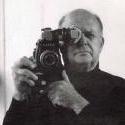
Sony A7R II official user thread
Amro Othman reacted to Gregormannschaft for a topic
Sony will leave something extra for the A7sII I reckon, and it could be adding that incredible slow motion. I currently have a Canon 5D Mark III and a Sony A7s and I'd like to get rid of the 5D but haven't yet because I dont want to lose that stills ability. The A7rII does look great...but video comes first so if the A7sII has incredible slow motion thats probably a better option.1 point -
Is it me or a7rii kills a7s in video? better DR (test was done and 1stop better) internal 4k FF 4k super clean S35 with same if not better than a7s low light. Crazy no? not to mention stills. so yes a7sii will have FF 4k internal full readout and probably better slowmo but then the stills will be no where near as good as A7rii so it seems if you also care about stills like me the a7rii is the way to go. and if you want slowmo then get on top of a7rii a Rx100iv.. Because a7sii will for sure not be better in slow mo (maybe as good but I doubt they do full readout 120fps) so...1 point
-
I believe you are both on the same page here really... I think Ebrahim what you really think(correct me if I'm wrong) is that some people tend to crush not just deepest blacks but shadows also so they lose all information in shadows and that looks like crap. I agree that the deepest blacks are mostly crushed in movies but the shadows are just pulled down a little to obtain more contrast but not so much to loose all information, what is the point in high dynamic range then if you throw away all that information in the grade.1 point
-
Well we can expect to see people unloading their A7Ss on ebay and the prices dropping pretty soon, as it seems the A7Rii will be a more balanced camera in a smaller form factor when shooting 4k.1 point
-
Hi Ricardo and welcome! I am also a relative newcomer and have found a huge amount of info on this site, and people here are great at sharing their experiences. You can take a look at the Anamorphic Lens-o-pedia, which is an aggregation of details about various adapters. Also consider the Anamorphic Shooter's Guide. Tito Ferradans has put together some fantastic info here too. All have adapters have advantages and disadvantages. Anamorphic lenses with more in the 'plus' column and less in the 'minus' column are usually more elusive & expensive. A full frame camera like the NX1 will reduce your practical options, and determining the anamorphic size/weight that fits your style of shooting (narrative, documentary, etc), will help narrow your choices further. Once you have reduced your list to a few possibilities, follow that up with research on each, Obviously EOSHD is a great resource, and you can find other tidbits of info scattered around the web. Make sure to watch lots of videos and test footage of your choices to see if the image quality will meet your needs. If you go for a vintage/discontinued product, you'll need to have some patience and diligence to locate it in the condition & the price range you're looking for. For me personally, wanting to do narrative, I decided I wanted something that is single-focus and relatively lightweight. I have a Century Precision Optics widescreen adapter which can be acquired relatively easily, but is not great at wide apertures and is soft at the edges. However it is easy to swap out taking lenses, allows partial zoom-through, the taking lens does the focusing, and is light enough to carry around handheld if needed (though rails is always a good idea to reduce stress on camera & lens joints). I also have a Bell & Howell projection lens, but it requires modification for greater ease of use. I haven't done the mod yet, and there is always risk of damaging the anamorphic unit. So like I said, every choice has pros and cons. I don't know if any choice is perfect, but most folks here seem to have found workarounds for limitations, Sometimes that means changing the way you shoot, sometimes that means selling the gear and putting the money towards a different option, sometimes that means doing crazy and ingenious modifications. But first: research, research, research, and a good anamorphic choice will emerge. Hope this helps! Best |. . | .|1 point
-

Nx500 or A6000 or G(x)7
Amro Othman reacted to utsira for a topic
I haven't used the GX7 but I have a G6 and an A6000. The G6 is a previous generation sensor to the GX7, and apparently the GX7 is a lot better for noise and low light than the G6, so I can't really compare the A6000 to the GX7. The A6000 now has very nice video with XAVCS. It's very clean indeed up to ISO 800. I don't own the other two lenses, but I have the SEL 35 1.8. It's very sharp, great autofocus, but the stabilization is useless for video, I leave it off. It produces very slight but IMO very ugly warping effects. I prefer my Voigtlander color-skopar 35, much more characterful (but completely manual). TBH I think the A6000 would be an incremental upgrade over the GX7. Slightly more dynamic range, slightly better low light (presumably?), slightly easier to get shallow depth of field. I'd advise you to wait. I'm sure it's only a matter of time before Sony do an APSC cam with something exciting like, 4K, BSI, IBIS, high frame rates etc.1 point -
I would like to see a direct comparison between A7R II and A7S with the same picture profile(Slog2 with the same LUT applied) in terms of color. IMO it would be good to have something yellow and something red in the same shot(probably some flowers would be the best choice because of the natural colors) because from what I've seen A7S has greenish yellows and magentish reds. Personally I think that is the main reason why it's hard to correct A7S colors because you have two color casts that are opposite to each other in the color spectrum at the same time... and I don't think that the whole image is affected by those casts, just certain colors(IMO yellows and reds).1 point
-
Canon XC10 4K camcorder
Mat Mayer reacted to Mattias Burling for a topic
Try&return but its looking like i will keep it. Have been so close to buying a XA20 or Xf100 for years now. Love the HMC151 I borrow from work every know and then. Here is a test from today, I had zero time for grading so I just used some of my presets. No time for a Tripod either.. No keying or power windows. So it is what it is1 point -

Canon XC10 4K camcorder
hmcindie reacted to Andrew Reid for a topic
What's so god damned hard about a dedicated ISO button though?????1 point -

anti moire filter yes or no
Emanuel reacted to Nick Hughes for a topic
The first time I ever recognized aliasing was after reviewing footage from a shoot in the woods. It was fall/winter so the trees were bare and the branches were aliasing heavily. To be fair, we were shooting 720p60 on footage on the 6D, so there probably would have been aliasing on a white wall, but it can happen out in nature. Still, it's a lot less likely than when you're surrounded by power lines and brick walls.1 point -

anti moire filter yes or no
Emanuel reacted to AaronChicago for a topic
Not sure if you've seen this or not but users have posted detailed comparisons. I would definitely get one b/c the pocket seems useless on alot of shots with the moire and aliasing. http://www.bmcuser.com/showthread.php?14481-I-am-done-with-the-pocket&p=173788&viewfull=1#post1737881 point -

Looking for a 120FPS camera with a decent sensor
Marco Tecno reacted to Jimmy for a topic
I also think the 120fps from NX1 is pretty amazing. Maybe it is a glass thing? I've been using the f2.0 zoom and it seems to have alot of detail in 120fps mode... Way better than, say, 1080p from a 5DIII Here is a frame grab from a 120fps shot... Yea, it is a a bit over sharpened, in camera, but you can see there is plenty of actual resolution too (this is a framegrab from the initial video, no post... banding is horrible)1 point -
Thanks, I think you will enjoy your rx10ii very much. As for the haunted house it is now sold. Not to me I'm sorry to say. I think the new owners already have experienced some nightly disturbances so maybe it'll come back on sale......1 point
-
Used on ebay. NX1 + grip + 2nd batt + S 1650 2-2.8 lens for $1970 shipped.1 point
-
Exactly - the Phantom Miro is what - $45k? it only records 1080p, has a limited dynamic range compared to any other camera at that price point, is rated at 640 ISO, ideally needs a data umbilical to a computer to function properly, can only record 3 seconds at a time at max fps, and that must be triggered 'after the fact'... and that still seems to have found a market - so I imagine this will too.1 point
-

Looking for a 120FPS camera with a decent sensor
Marco Tecno reacted to Shield3 for a topic
After staying up half the night (and working 13 hours yesterday) I ended up getting a used NX1 + grip + 16-50 F/2-2.8. I love my 1dc, but this will be more for casual shooting. It does things the 1dc doesn't, like: Built in EVF / touch screen / 120FPS @ 1080p / AF in video mode - even high speed AF! The gh4 doesn't even do that. My wallet wishes I'd never have watched this video: https://www.youtube.com/watch?v=0DigAgYD-QY While on paper the Sony looks amazing - I pulled down a few videos for both this and the RX10 II - I just didn't care for the image on the Sony. With the small sensor it just looks to camcorder-like. Yes, I know you can get close to the subject and zoom out and get nice shallow DOF - but look at that video I just posted - that's @ 45mm. I think the REC 709 coming out of the NX1 will be just fine - I'll dial down the contrast/saturation a bit. It will be a pain transcoding the h265, but that's why we have beefy machines, right? I love how small the Rx100 IV is, but the overheating reports scare me. My original RX100 would overheat and shut off during baseball games. So did my NEX-5n and many other Sonys. While it's true for flat out detail and sharpness the new RX models are probably the best, I much prefer the look of the larger sensor NX1 so that's what I bought. I think the 1080p/120 from the NX1 looks pretty damn fantastic. Plus it will hold the AF. Think about that. I shoot my son playing travel baseball - now I can shoot slo-mo him hitting and running through all the bases - that's far too tough to pull focus on with any sort of shallow DOF with the 1dc. This 1080p120 looks far better than the 1080p60 I'm getting from the 1dc. You know that as well as I do. Don't know about you Andrew, but all the sample videos I've seen from the 1" sensor'd new Sonys look like camcorder footage. I don't want anything that sharp at 4k.1 point -
Looking for a 120FPS camera with a decent sensor
vaga reacted to ricardo_sousa11 for a topic
Andrew, could you do a comparison between RX100 MKIV/RX 10II and Nx1 ? It seems that would be a great article1 point -
Download this and print it out on white paper. Tape the sheet on all 4 sides flat to a wall or door. Make sure the sheet & tripod are leveled (I used a big square ruler if that helps). Line up the bottom of your view finder to the black boxes on the sheet and adjust until the lens looks about leveled. When testing my recent build I discovered not only was my glass misaligned by 2° but the front element wasn't flush with the step. In so many words I could see that my image was very soft & the focus was slightly shifted. So I took it apart and clean, greased, recalibrated everything. Now the image is razor sharp and clean. Need any help I can walk you thru it.1 point

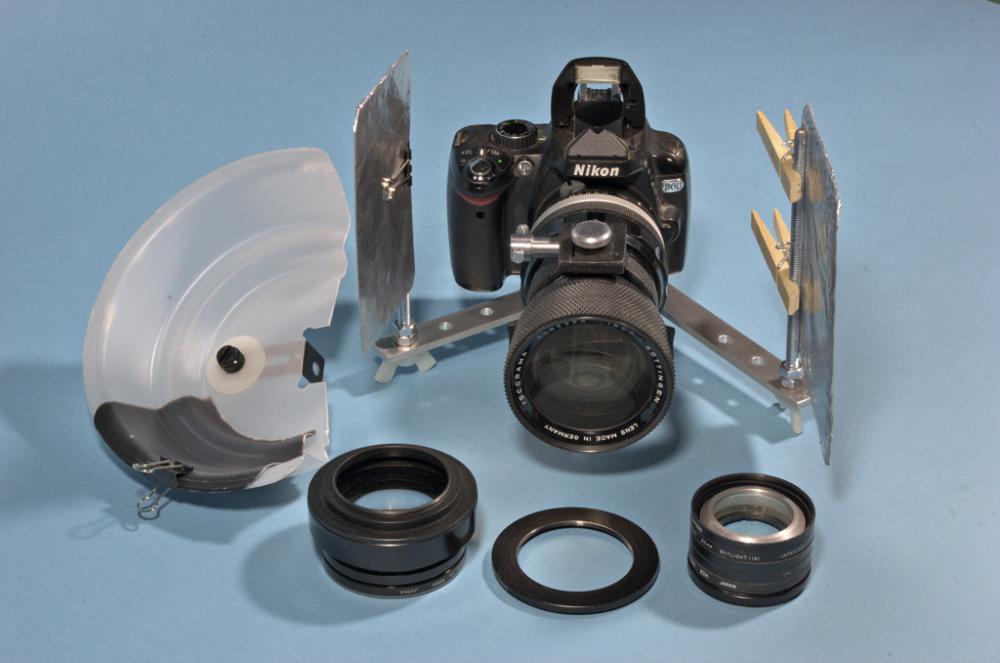
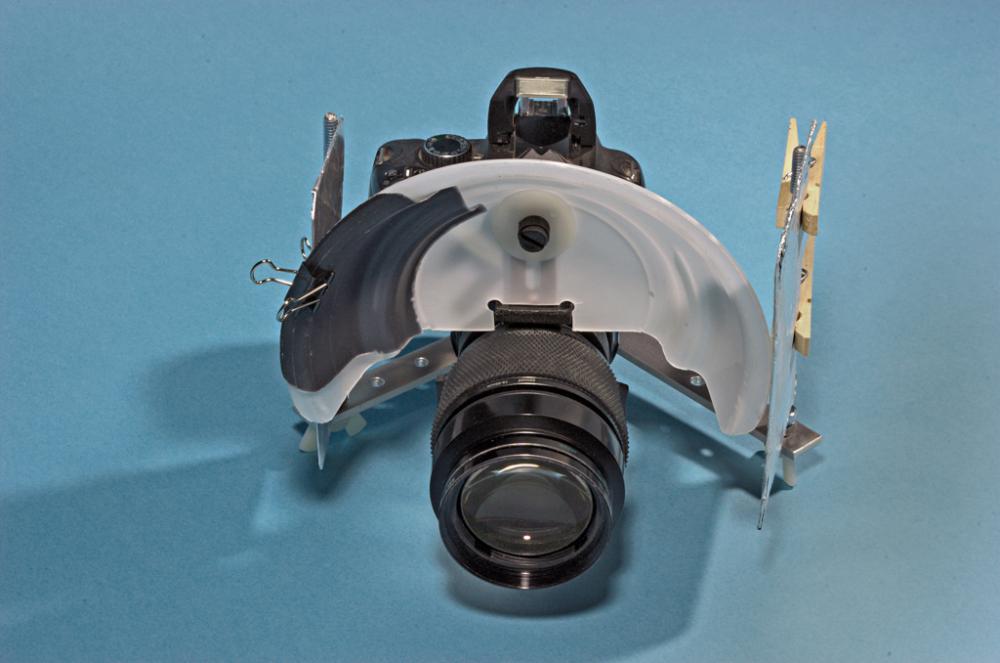
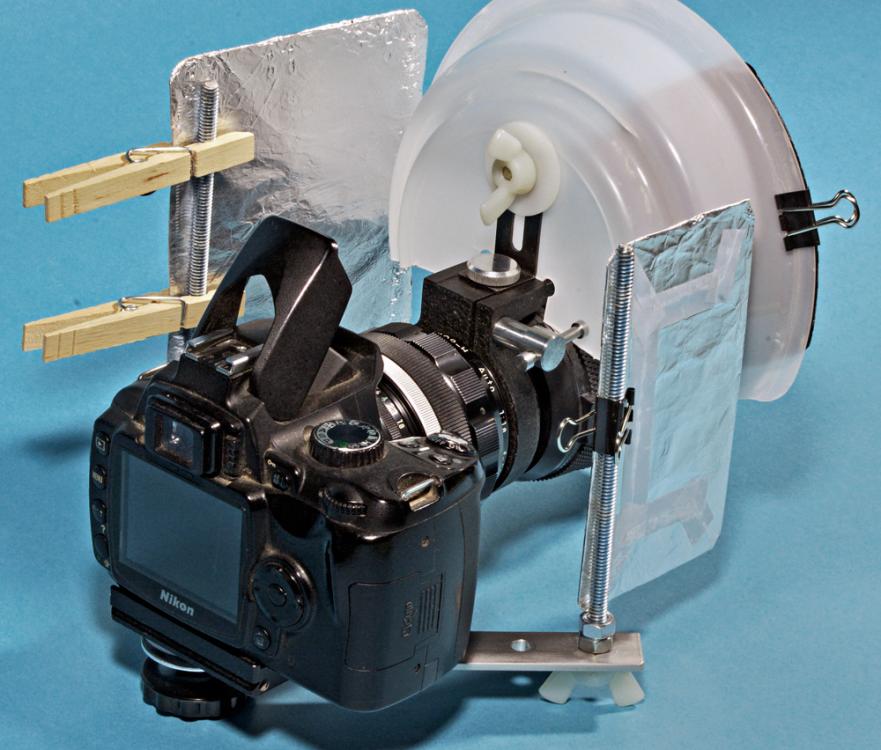
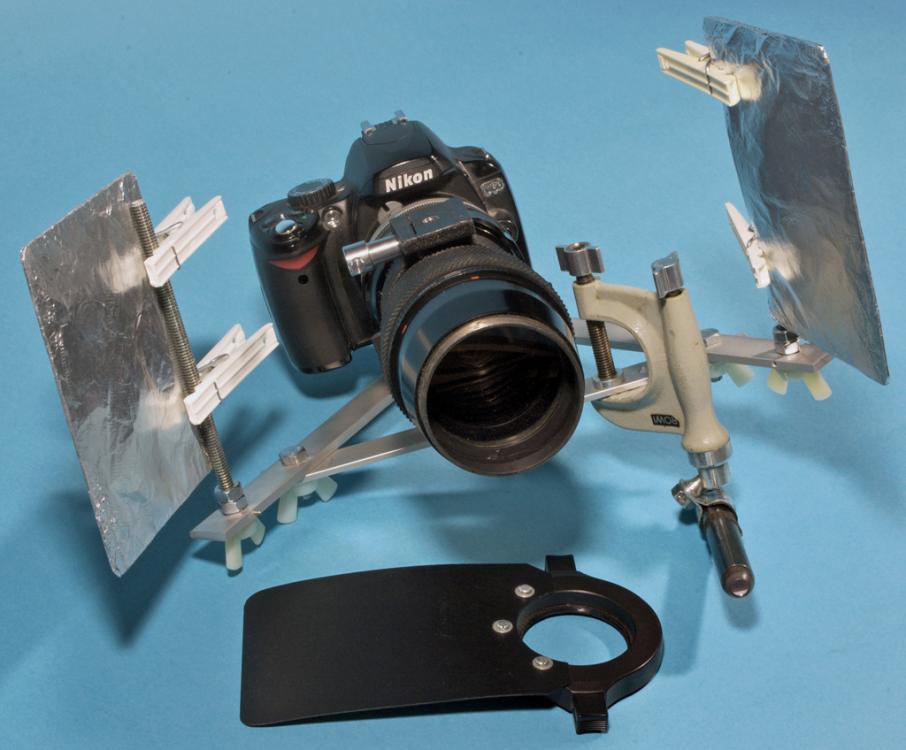
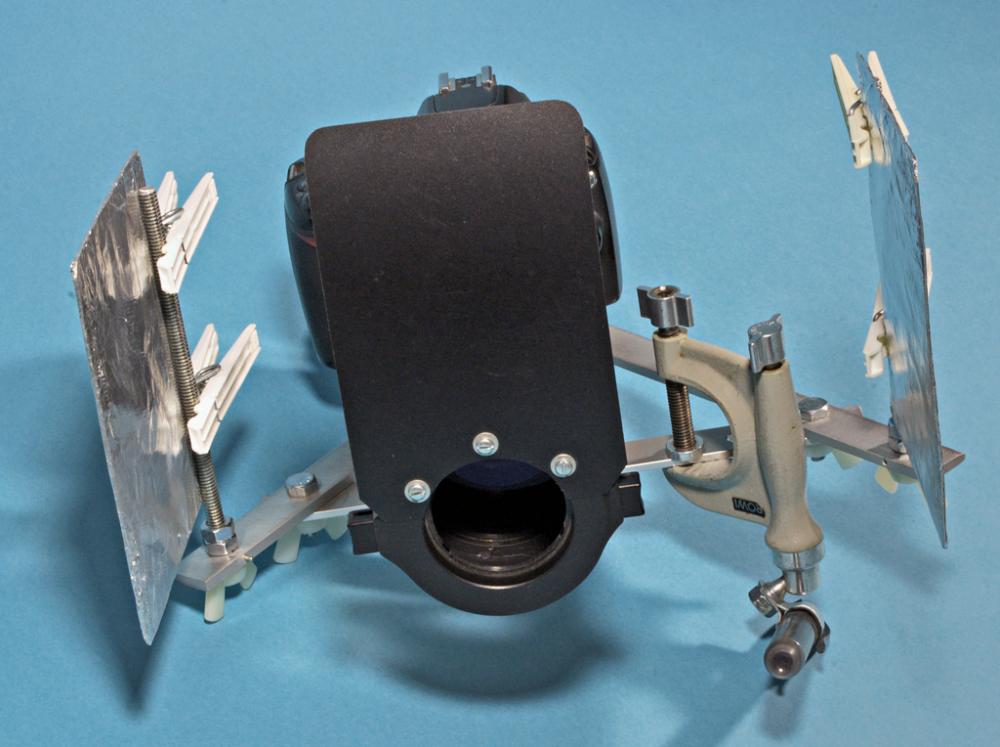
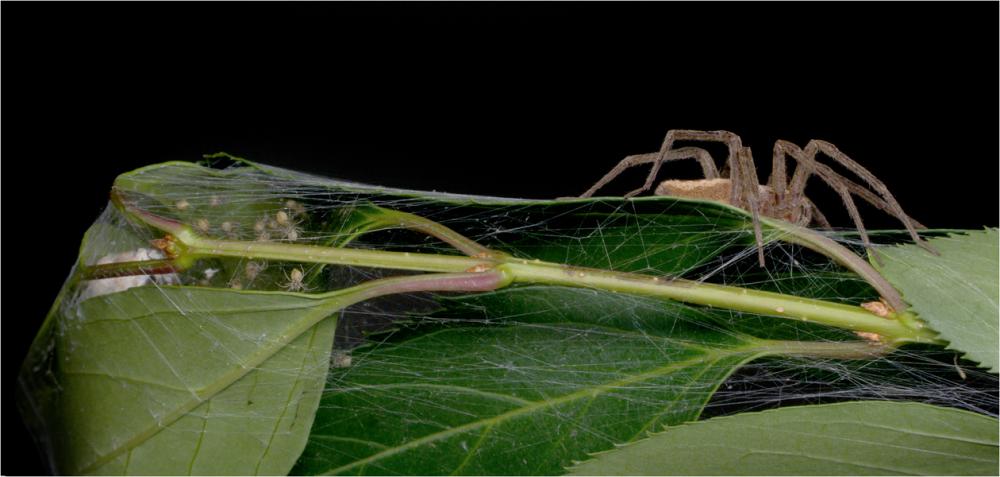
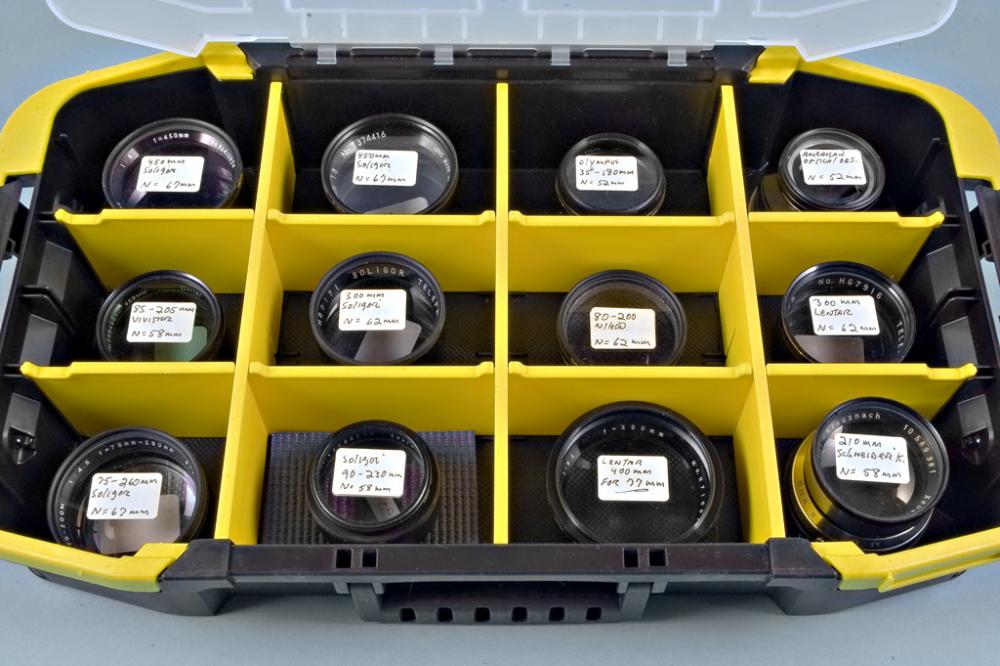
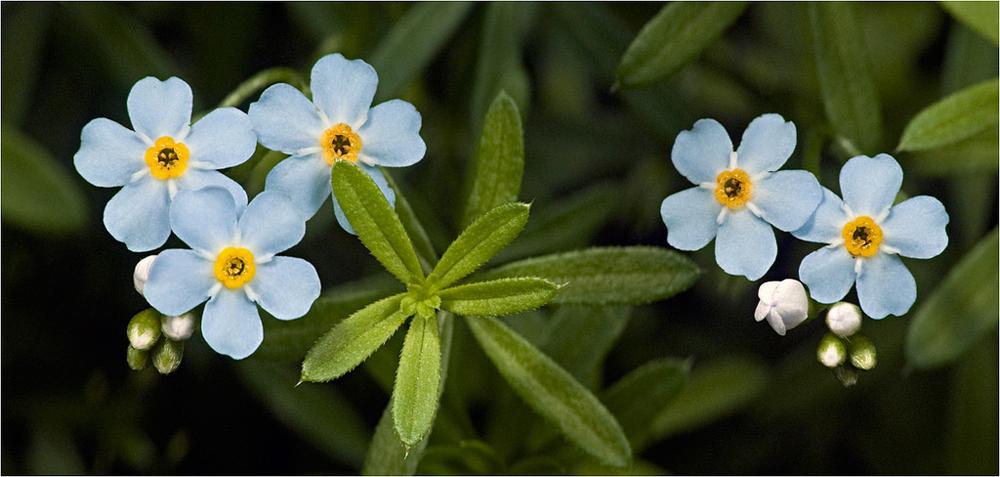
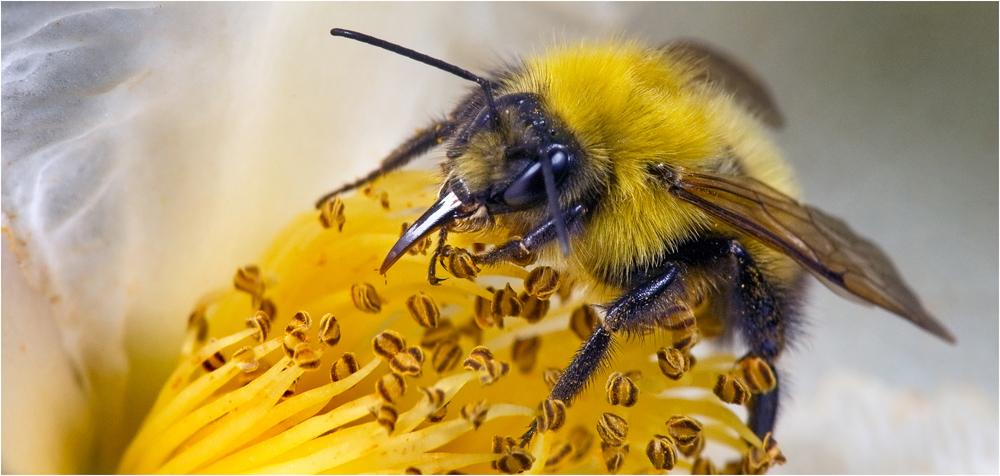
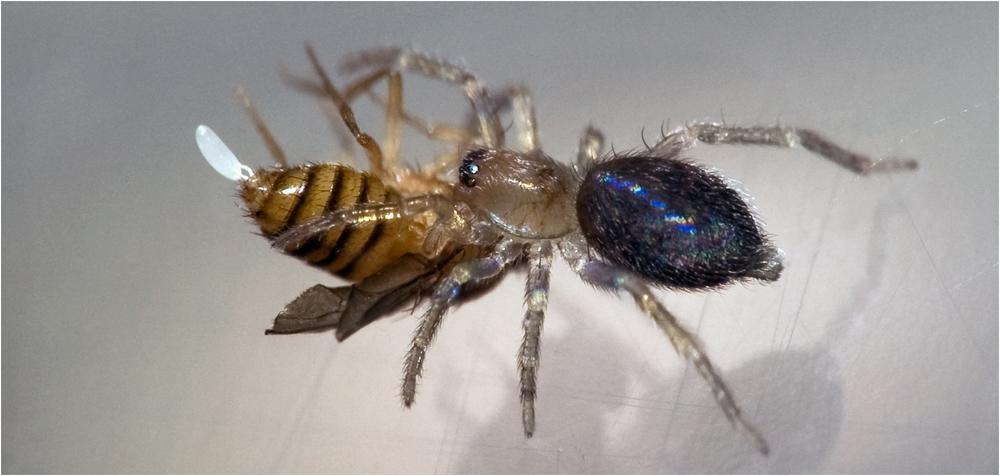
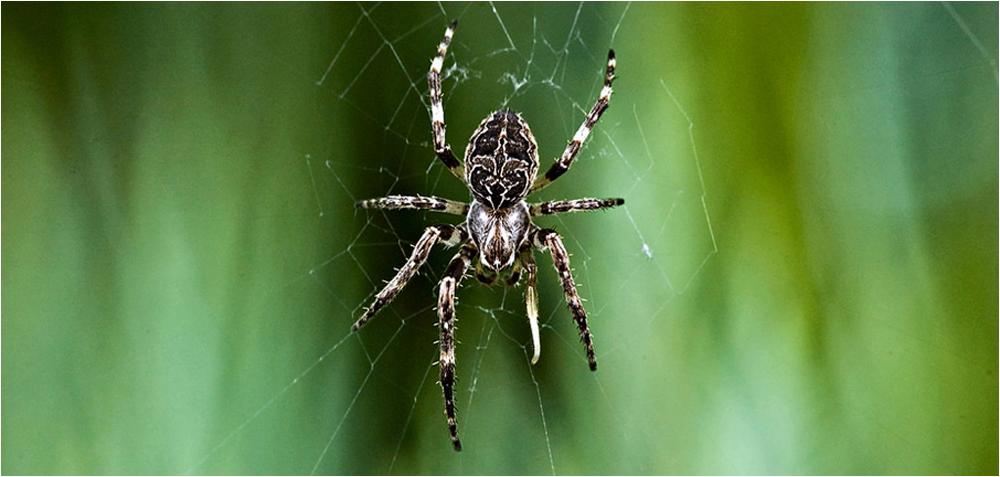
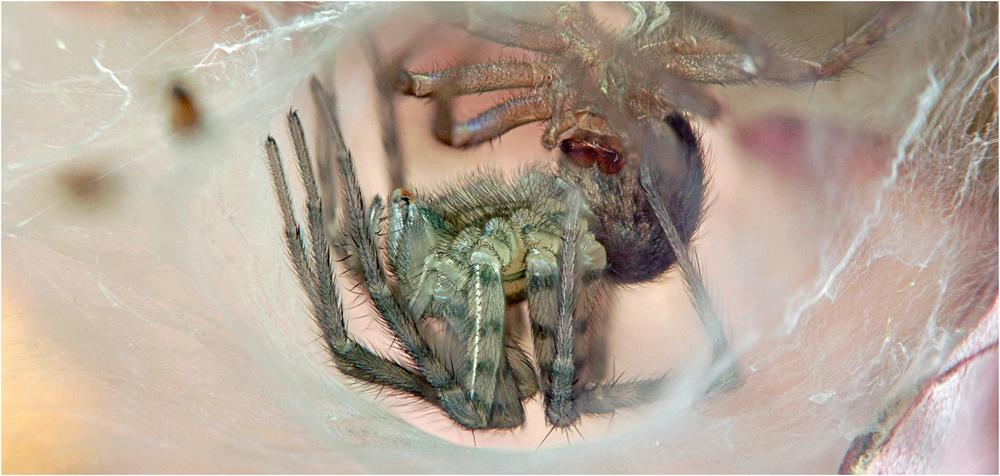
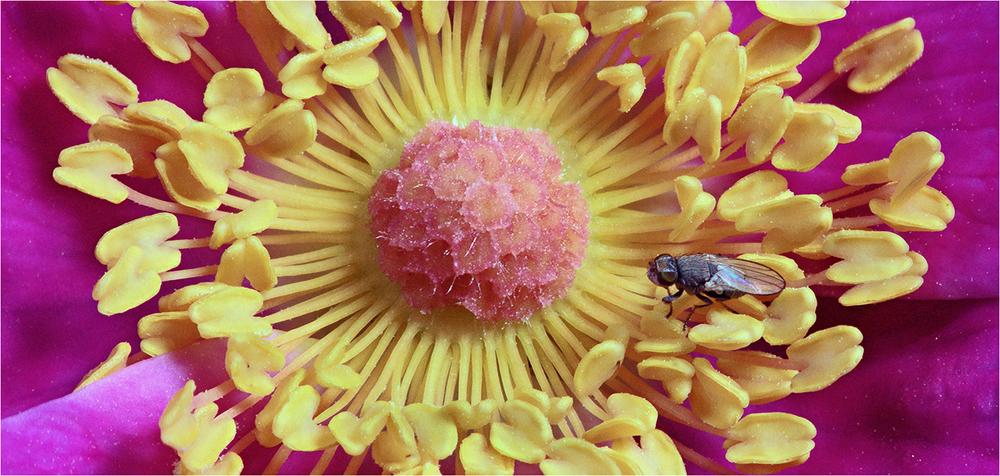
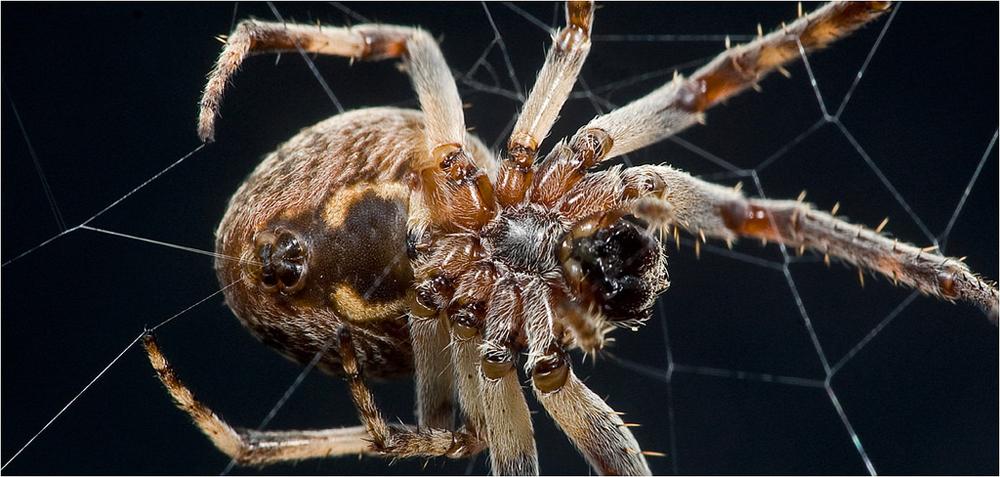
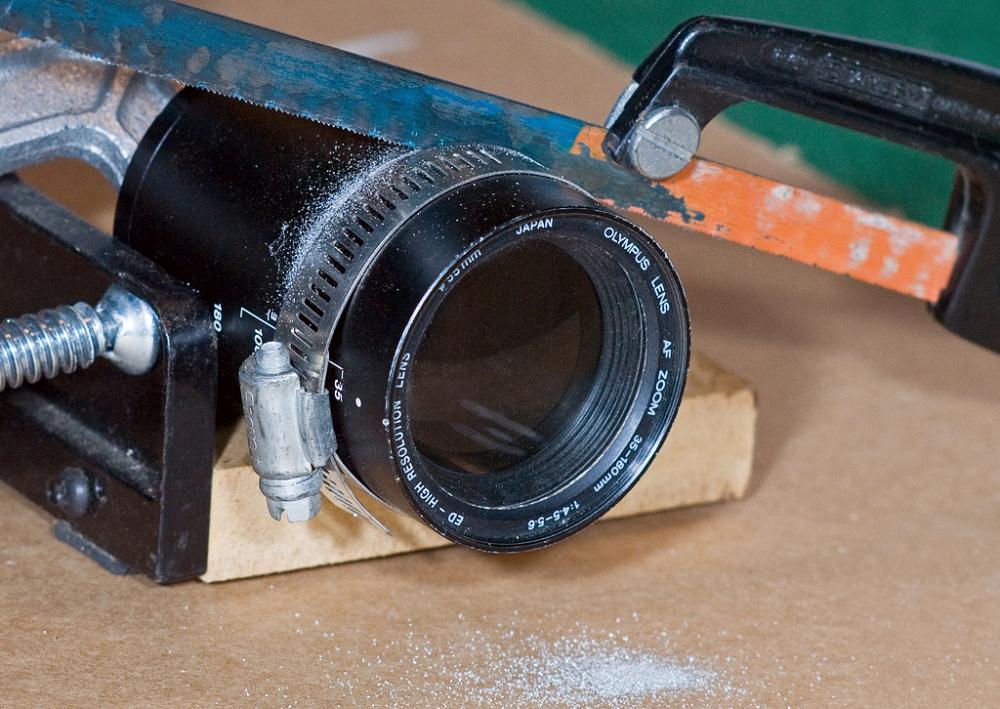
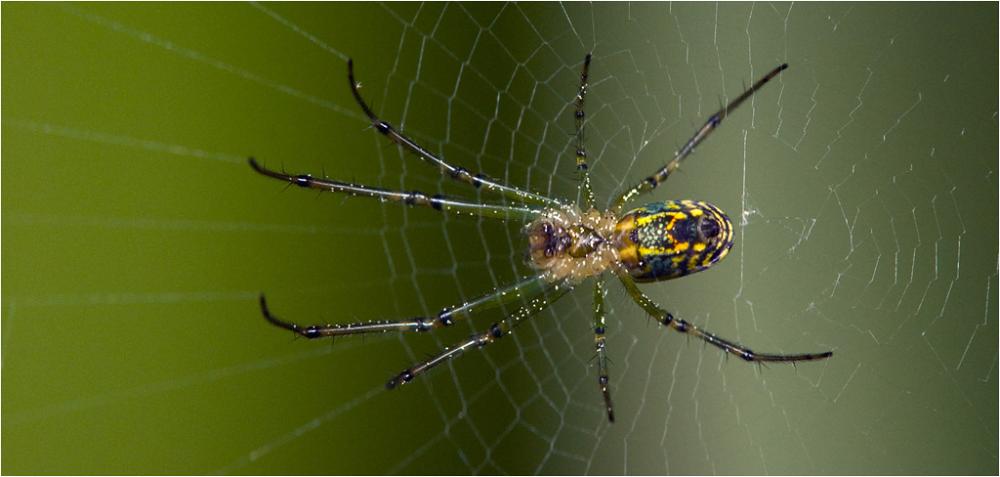
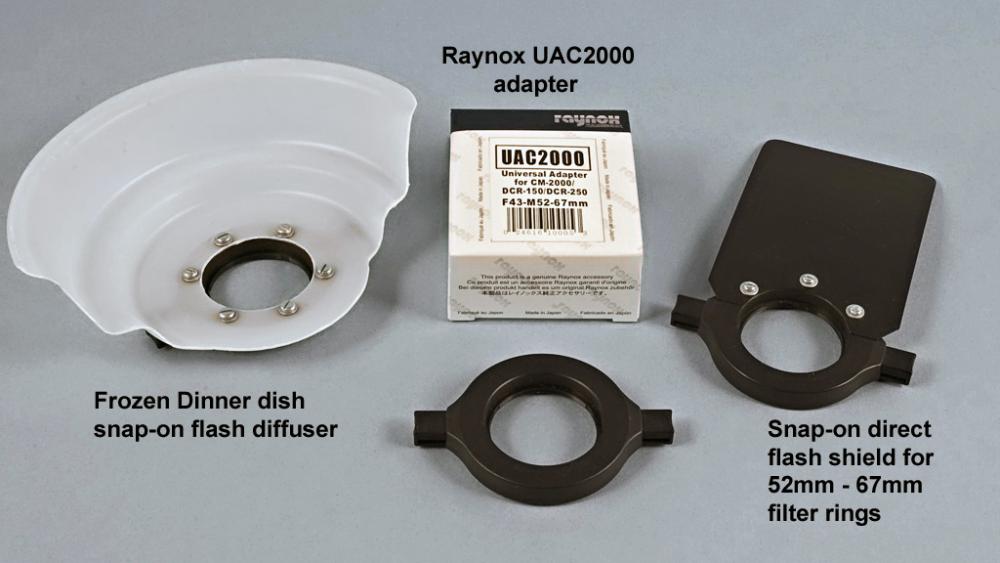



.thumb.png.c4a3839200c2563fae4d0c747236807f.png)


